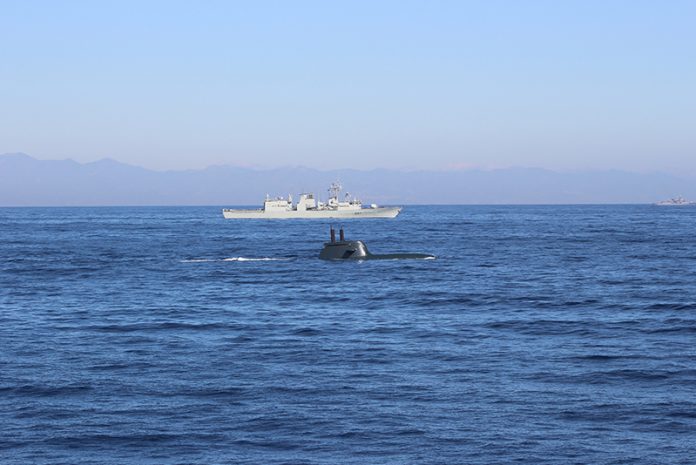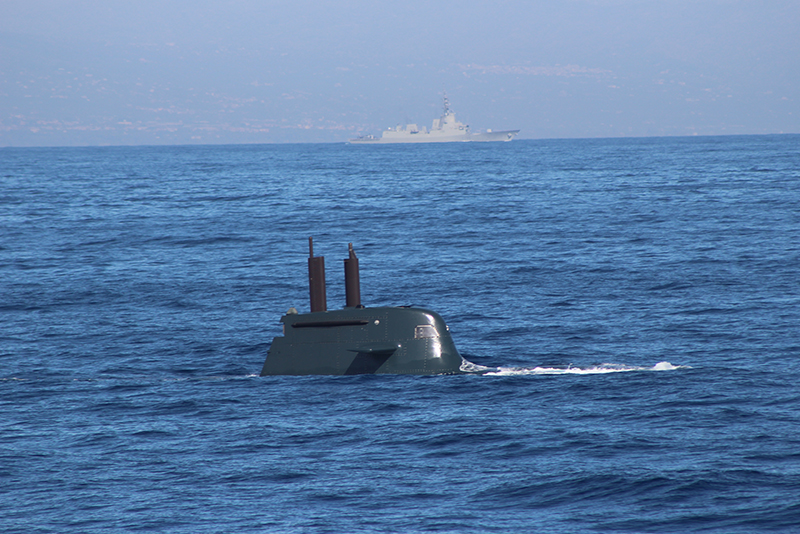
NATO’s anti-submarine warfare (ASW)-focused Exercise Dynamic Manta – currently underway in the Mediterranean region’s Ionian Sea – is highlighting the impact of submarine numbers in terms of both the ASW threat and the alliance’s own ASW capability.
ASW threat & Capability
As regards the threat, “The number of submarines operating in the Mediterranean is increasing,” Rear Admiral Andrew Burcher, Commander Submarines NATO (COMSUBNATO), told a Dynamic Manta press briefing. “All these submarines that are coming in have advanced capabilities in comparison to the past, so we have to stay both proficient and capable in the ASW realm.”
Rear Adm Burcher noted Russia’s Ocean Shield exercise, which took place in the Mediterranean in August 2019, as “the largest post-Cold War maritime exercise conducted by Russia”. Moreover, he said, “a large number of nations that surround the Mediterranean are increasing the number of submarines that are operating [there].” Here, he named Algeria, Egypt, Israel, and Russia.
Rear Adm Burcher noted that 13 NATO countries have a submarine capability. The non-US NATO members have a combined number of 69 boats, he said. With the addition of US Navy Atlantic Fleet submarines, “We’re talking about 100 submarines that NATO would have”, he added. Rear Adm Burcher also pointed to how NATO regional member states such as Greece, Italy, Spain, and Turkey “are increasing their submarine footprint in the area” and “are all conducting expansion programmes within the submarine realm”.
“ASW is probably one of the most complex warfare challenges that faces the alliance because of the constant improving capabilities within the undersea domain,” said Rear Adm Burcher. “Submarines are constantly improving in their stealth, they are improving in their tactics, and [also] in the sensors they have,” he added.
Dynamic Manta
“The point of Dynamic Manta is to show credible defence, that [NATO] has the ability to [interoperate] in the ASW realm,” said Rear Adm Burcher. “These types of exercises allow us to really put theory into practice … in a highly complex environment.”
Dynamic Manta is one of NATO’s two annual advanced ASW training exercises: situated in the Mediterranean, it is based around Standing NATO Maritime Group 2 (SNMG 2), currently under Italian Navy (ITN) command. Five diesel-electric submarines from four NATO navies are present: two Italian, one French, one Greek, and one Turkish boat. Four frigates (Italian, Canadian, Greek, and Turkish) plus various organic helicopters and land-based helicopters and maritime patrol aircraft are ranged against them.

Rear Admiral Paolo Fantoni, Commander SNMG 2, told the briefing – onboard the ITN’s Bergamini-class FREMM frigate and SNMG 2 flagship ITS Carabiniere – that “submarines are always a challenge in the maritime environment …. This exercise will help ensure our crews will be able to respond to the threats posed by sub-surface forces.”
The other NATO ASW exercise, Dynamic Mongoose, occurs in the North Atlantic and is based around SNMG 1, currently under Royal Norwegian Navy command.













